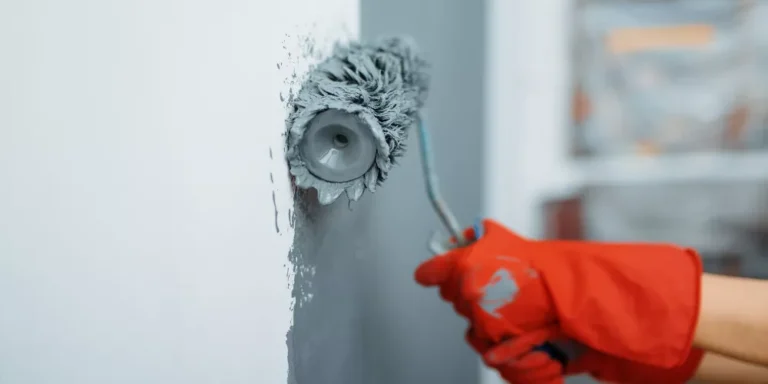How often should gutters be cleaned to avoid roof damage
Gutters are an essential part of a home’s roofing and drainage system in the USA. They direct rainwater away from the roof, walls, and foundation, protecting the home from water damage, mold, and structural issues. Many homeowners overlook gutter maintenance until a problem arises, but clogged or damaged gutters can cause serious roof issues, including leaks, rot, and weakened structural supports. Regular cleaning and maintenance are critical to prolonging the life of the roof and preventing costly repairs. Gutters are exposed to leaves, twigs, dirt, and debris, especially in areas with trees or strong winds. Even a few inches of buildup can cause water to overflow and seep into the roof or walls. Seasonal changes affect the amount of debris, with fall typically being the most critical time for cleaning. Homeowners in wet climates may need more frequent attention to prevent ice dams or water pooling. In addition to preventing damage, clean gutters improve curb appeal and reduce the risk of pests that nest in stagnant water or debris. Understanding how often gutters should be cleaned helps homeowners maintain their property efficiently and safely. This guide provides detailed information about gutter maintenance frequency and steps to prevent roof damage. Following these practices ensures that your home remains safe, dry, and structurally sound throughout the year. Proper gutter care also protects landscaping and foundation from erosion caused by uncontrolled water flow.
How often should gutters be cleaned to avoid roof damage
Maintaining gutters is a key step in protecting a roof and home from water damage. Clogged gutters can lead to leaks, structural decay, and costly repairs. Regular cleaning ensures water flows freely, reduces ice dam risks, and preserves the integrity of the roof. Below are the main factors and practices for determining cleaning frequency.
1. Cleaning gutters in spring
Spring cleaning is essential after winter storms. Ice, snow, and debris can damage gutters and create blockages. Leaves, twigs, and dirt from melting snow often accumulate and prevent proper water flow. Cleaning gutters in early spring prepares them for heavy spring rains. Inspect for winter damage, such as sagging or loose brackets. Check downspouts to ensure water is draining properly. Remove any sticks, pine needles, or debris left behind. Consider flushing gutters with water to clear small clogs. Spring maintenance also helps prevent mold or moss growth. Take note of areas prone to overflow or pooling. Fix minor repairs before the rainy season intensifies. A thorough spring cleaning protects the roof from leaks. Inspect gutters for rust or cracks. Replace damaged sections as needed. Make sure the slope of the gutters allows proper drainage. Tighten loose fasteners to avoid sagging. Clean gutter screens if installed. Trim nearby branches that may drop leaves. Use gloves and ladders safely. Spring cleaning sets the foundation for a year of healthy gutters.
2. Cleaning gutters in summer
Summer may seem dry, but debris can still accumulate from trees, storms, or wind. Birds, insects, and small animals may leave nests that block water flow. Cleaning during summer ensures gutters are ready for summer storms or sudden rain events. Inspect gutters for any damage caused by hail or heavy winds. Remove any accumulated leaves, dirt, or seeds. Flush downspouts to check for blockages. Inspect gutter guards or screens to make sure they are intact. Clean overflow areas where water may pool. Check for signs of leaks or rust that could worsen over time. Summer cleaning is also an opportunity to evaluate if gutters need professional repair. Clear away overhanging branches to reduce future debris. Ensure gutters are securely fastened. Test water flow by running a hose through the system. Replace worn-out sections or fasteners. Remove moss or mildew that may appear in humid areas. Keep gutters clear to prevent water backup during unexpected summer storms.
3. Cleaning gutters in fall
Fall is the most critical time for gutter maintenance in the USA. Falling leaves, pine needles, and seeds can quickly clog gutters. Heavy rain combined with debris can cause overflow, water damage, and roof leaks. Clean gutters before and after the peak of leaf fall. Remove all accumulated debris to prevent blockages. Check downspouts to ensure proper drainage. Inspect gutters for damage caused by summer storms. Clear any mold, moss, or algae buildup. Trim branches that may shed leaves directly into gutters. Check fasteners and brackets for stability. Test water flow with a hose to identify hidden clogs. Remove nests or debris left by animals. Fall cleaning protects the home from winter ice buildup. Inspect gutters for sagging or rusted areas. Replace or repair damaged sections promptly. Consider installing gutter guards to reduce debris accumulation. Check roof edges for loose shingles. Ensure downspouts direct water away from the foundation. Remove dirt and debris from screens. Fall maintenance prevents costly roof or siding damage.
4. Cleaning gutters in winter
Winter cleaning may be necessary in areas with heavy snow, ice, or freezing temperatures. Ice dams can form when clogged gutters prevent proper drainage. Snow and ice add extra weight to gutters, increasing the risk of sagging or detachment. Remove debris before the first snowfall. Inspect gutters for loose brackets or damage. Ensure that downspouts are clear so melting snow can drain. Avoid walking on icy surfaces while cleaning. Remove small ice buildup with care to prevent damage. Inspect roof edges for icicles that may indicate poor drainage. Clear gutters of any trapped debris to allow free water flow. Consider using heated cables to prevent ice dam formation. Winter maintenance reduces roof leaks caused by frozen water. Check for cracks or rust before ice forms. Evaluate gutter slope to ensure drainage is effective. Use proper ladders and safety gear for icy conditions. Inspect nearby trees for branches that may fall under snow load. Clear downspouts to prevent standing water. Winter care prevents structural damage and costly repairs.
5. Frequency for homes near trees
Homes surrounded by trees may require more frequent cleaning. Leaves, seeds, and twigs accumulate quickly and block gutters. Inspect and clean gutters every 2-3 months or after heavy leaf fall. Monitor areas where branches overhang the roof. Remove debris before it creates water backup or attracts pests. Trim trees to reduce future debris. Inspect gutter guards and screens regularly. Consider seasonal inspections in spring, summer, and fall. Check for bird nests and small animal activity. Flush gutters and downspouts to confirm free flow. Homes with dense tree coverage often need multiple cleanings per year. Prompt cleaning prevents roof leaks and foundation damage. Evaluate gutter slope and fasteners more frequently. Replace damaged sections as needed. Clear moss and dirt that accumulate from tree runoff. Check for clogs after storms. Multiple cleanings per year protect the roof and prevent ice dams in colder climates.
6. Signs gutters need cleaning
Several signs indicate gutters need attention. Overflowing water during rain, sagging sections, or visible debris are obvious clues. Stains on siding or the foundation indicate water is not draining properly. Standing water in gutters suggests blockages. Plants or weeds growing in gutters show debris buildup. Pests like birds, insects, or rodents in gutters signal frequent maintenance is required. Roof shingles covered in moss or algae may indicate improper drainage. Listen for dripping water or water pooling around the foundation. Gutters should be inspected after storms or seasonal changes. Regular visual checks help catch problems early. Cleaning based on signs ensures timely maintenance. Ignoring warning signs can lead to costly repairs. Roof leaks, water damage, and mold often follow clogged gutters. Maintaining gutters prevents long-term structural damage. Monitoring signs reduces emergency repairs. Check downspouts and screens for blockages. Clean gutters whenever warning signs appear.
7. Benefits of gutter guards
Gutter guards reduce the frequency of cleaning by preventing leaves and debris from entering. They can be mesh screens, covers, or brush inserts. Guards help water flow freely while blocking larger debris. Although guards do not eliminate cleaning entirely, they reduce maintenance time and effort. Gutter guards protect against roof damage caused by overflow. They also help prevent pests from nesting in gutters. Choose guards compatible with your roof and gutter system. Clean guards periodically to remove small debris. Inspect fasteners and ensure proper installation. Guards extend the lifespan of gutters by reducing rust and blockages. Many homeowners in the USA find guards cost-effective over time. Combining guards with seasonal cleaning ensures optimal protection. Properly installed guards improve drainage efficiency. Guards help reduce ice dams in winter by preventing standing water. Consider professional installation for maximum effectiveness.
8. Risks of ignoring gutter maintenance
Neglecting gutters can cause serious roof and home damage. Clogged gutters lead to water overflow, which can damage siding, windows, and the foundation. Excess moisture encourages mold, mildew, and rot. Ice dams form in colder climates, causing roof leaks. Weight from debris and ice can cause gutters to sag or detach. Pest infestations increase due to standing water and debris. Water pooling near the foundation can lead to basement flooding. Roof shingles may deteriorate faster from trapped water. Gutters may fail completely, requiring full replacement. Interior water damage can affect ceilings, walls, and insulation. Ignoring maintenance results in higher repair costs. Preventative cleaning reduces emergency expenses. Property value can decrease due to poor maintenance. Homeowners face structural safety risks without regular cleaning. Routine maintenance ensures a long-lasting roof and gutters.
9. Tools and safety tips for cleaning gutters
Cleaning gutters safely requires proper tools and precautions. Use a sturdy ladder, gloves, and safety glasses. A gutter scoop, bucket, or trowel helps remove debris. A hose can flush small clogs from downspouts. Wear non-slip shoes and secure the ladder on even ground. Avoid leaning too far from the ladder to prevent falls. Consider a ladder stabilizer for added safety. Safety harnesses may be necessary for two-story homes. Remove large debris carefully to avoid injury. Inspect the gutter for sharp edges or nails. Clean in sections rather than rushing. Use a helper if possible. Avoid cleaning during strong winds or rain. Professional services may be safer for high or difficult-to-reach gutters. Follow step-by-step procedures for safe cleaning. Regular maintenance combined with safety practices prevents accidents and ensures effectiveness.
10. Professional gutter cleaning vs DIY
Hiring a professional can save time and ensure thorough cleaning. Professionals have experience, safety equipment, and tools to reach high or complex gutters. DIY cleaning is feasible for smaller homes with accessible gutters. Professionals may also inspect for damage and recommend repairs. Costs vary based on gutter length, height, and debris type. Some homeowners prefer seasonal professional cleaning combined with regular DIY checks. Professionals reduce risk of injury and guarantee proper drainage. They can install guards and provide maintenance advice. DIY saves money but requires careful attention to safety and technique. Combining professional and DIY approaches ensures gutters stay clean year-round. Professionals may also identify potential roof issues early. Well-maintained gutters from either method prevent roof damage and extend the life of the home’s drainage system.
Conclusion
Gutter cleaning is a critical maintenance task for homeowners in the USA. Regular cleaning prevents roof damage, water infiltration, and structural problems. Seasonal cleaning in spring, summer, fall, and winter ensures proper water flow and prevents ice dams or overflow. Homes near trees or in high-debris areas may need more frequent attention. Signs such as overflowing water, sagging sections, and standing debris indicate cleaning is required. Gutter guards can reduce the frequency of maintenance while preventing clogs. Ignoring gutters can lead to mold, rot, pest infestations, and costly repairs. Proper insulation, slope, and drainage are essential for effective gutters. Safety is a priority when performing DIY cleaning, with ladders, gloves, and protective equipment recommended. Hiring professionals can ensure thorough cleaning and early damage detection. Regular gutter maintenance protects the roof, siding, foundation, and interior of the home. Clean gutters improve energy efficiency, reduce emergency repairs, and enhance property value. Proper upkeep extends the lifespan of the entire drainage system. Seasonal attention and inspection prevent long-term problems. A consistent cleaning schedule ensures water flows freely, protecting both the roof and home. By maintaining gutters properly, homeowners create a safe, durable, and comfortable living environment.
You have not enough Humanizer words left. Upgrade your Surfer plan.







